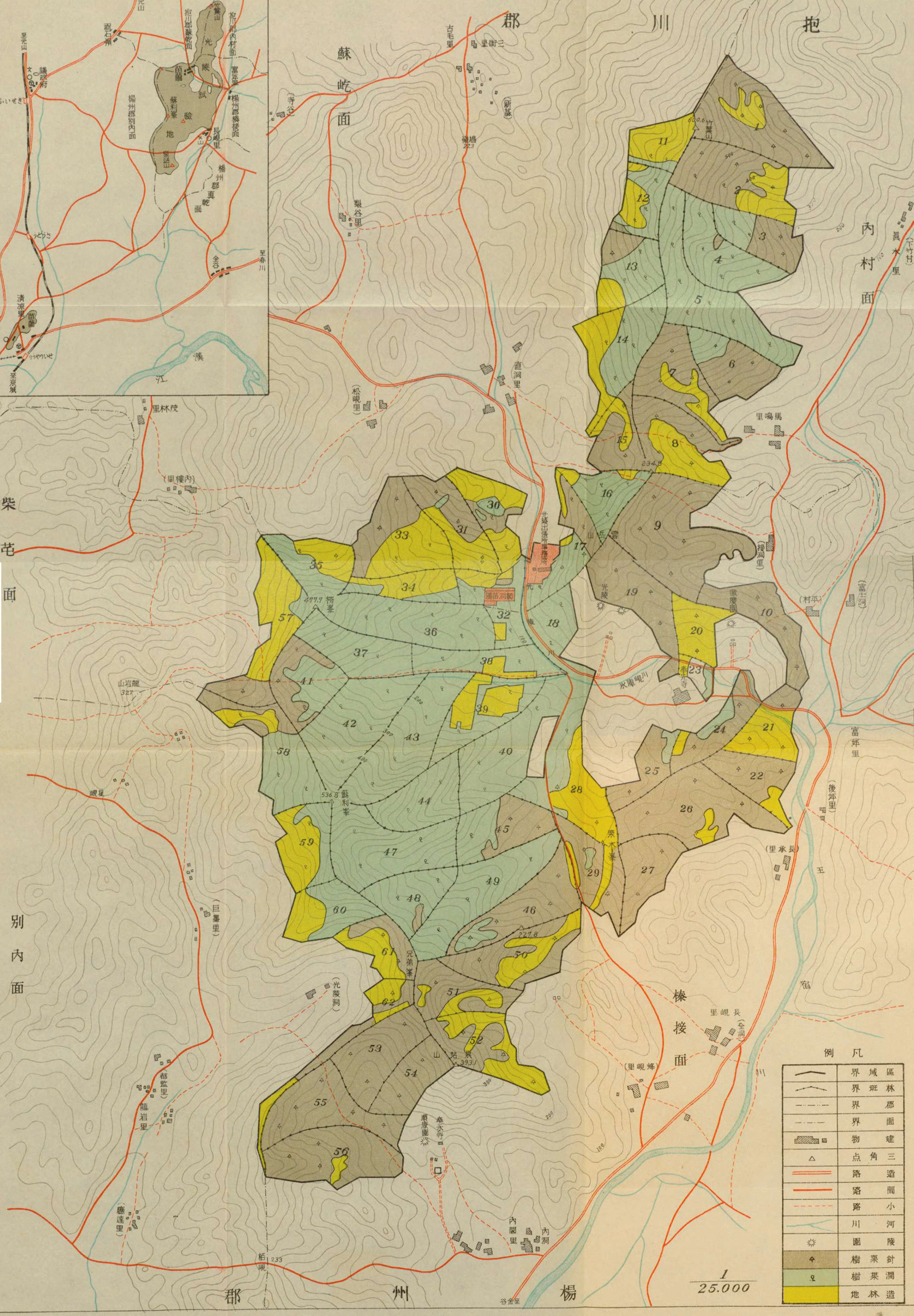4A Lab Seminar
Jung-Hwa Kim: Superior Trees: Creating a Forest in the First Korean Arboretum, 1922–1945

A Map of Model Forest, in Catalogue of the Japanese Government-General of Korea Forest Experiment Station (朝鮮總督府林業試驗場一覽), 1937.
The Central Forest Experiment Station of Korea, which was established in 1922 and evolved into the first Korean arboretum, played a role in transforming devastated mountains into thriving woodlands on the Korean Peninsula during the Japanese colonial era. Its model forest, along with a research centre for the study and collection of trees and a nationwide network of nurseries for cultivating and supplying saplings, aimed at providing scientific and standard forests to regreen the bare hills all around Korea. The process of developing model forests, however, involved not only scientific forestry but also political and aesthetic considerations. The key strategy for the construction of an ideal forest relies on a tree match to identify superior tree species from Korea, Japan, Europe, and America, thereby selecting the dominant tree species. This comparative investigation based on the growth properties of tree species from different regions sparked a competition of landscapes, especially between the ideologies of localism and universalism or imperialism. The belief in the “tasteless” Korean landscape and the Japanese ideologies of a sylvan tradition and sylvan nationalism led to the introduction of Japanese and Euro-American flora – such as the Japanese cedar, the Japanese larch, and the American catalpa – in the Korean Peninsula. Accordingly, the model forest was designed as to be suitable for the observations and measurements of the competition and to improve the legibility of each forest section. Through a review of the tree collections and layout of the arboretum, this presentation highlights the scientific, political, and aesthetic ideas underpinning the creation of forests in colonial Korea.
Jung-Hwa Kim is a Landscape Historian and a Postdoctoral Fellow in the interdisciplinary programme 4A Laboratory: Art Histories, Archaeologies, Anthropologies, Aesthetics. Her research focuses on the global transfer of ideas and the role of politics, technology, and plants in nineteenth- and twentieth-century garden art and open spaces. She received a PhD from Seoul National University in 2017 with a dissertation on "The Origin and Evolution of Botanical Gardens in Korea". She worked as a landscape architect at several design firms in Seoul (2008–2012) and served as a lecturer at Gachon University (2015, 2017), the University of Seoul (2019–2021) and Sungkyunkwan University (2020–2021) in South Korea.
28. Juni 2021, 16:00 Uhr
Online 4A_Lab Seminar. The event takes place online.
For KHI-externs: please register for this seminar at 4a_lab@khi.fi.it
Hinweis
Diese Veranstaltung wird durch Fotografien und/oder Videoaufnahmen dokumentiert. Falls es nicht Ihre Zustimmung findet, dass das Kunsthistorische Institut in Florenz Aufnahmen, auf denen Sie erkennbar abgebildet sein könnten, für die Veranstaltungsdokumentation und Öffentlichkeitsarbeit (z.B. Social Media) verwendet, bitten wir um eine entsprechende Rückmeldung.


